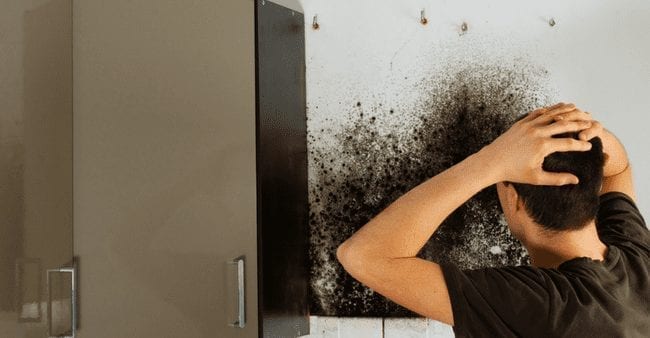Discover Hidden Techniques for Locating Hidden Pipe Leakages
Discover Hidden Techniques for Locating Hidden Pipe Leakages
Blog Article
Do you find yourself trying to locate tips about Top leak detection hacks?

Early detection of dripping water lines can reduce a potential calamity. Some little water leaks may not be noticeable.
1. Examine the Water Meter
Every residence has a water meter. Inspecting it is a guaranteed manner in which aids you find leakages. For beginners, shut off all the water sources. Guarantee no person will purge, utilize the faucet, shower, run the washing machine or dishwasher. From there, go to the meter as well as watch if it will certainly alter. Given that no one is utilizing it, there must be no motions. That suggests a fast-moving leak if it moves. If you find no adjustments, wait an hour or 2 as well as inspect back again. This indicates you might have a sluggish leakage that can also be below ground.
2. Examine Water Usage
Evaluate your water costs as well as track your water intake. As the one paying it, you ought to observe if there are any disparities. If you spot sudden changes, despite your usage being the same, it means that you have leaks in your plumbing system. Keep in mind, your water costs should drop under the exact same variety every month. An abrupt spike in your costs indicates a fast-moving leak.
At the same time, a constant rise every month, despite having the very same habits, shows you have a sluggish leakage that's also gradually intensifying. Call a plumber to thoroughly examine your property, specifically if you feel a cozy location on your flooring with piping beneath.
3. Do a Food Coloring Examination
30% comes from toilets when it comes to water intake. Examination to see if they are running effectively. Decline flecks of food color in the storage tank as well as wait 10 mins. There's a leak in between the tank as well as bowl if the shade in some way infiltrates your dish throughout that time without flushing.
4. Asses Exterior Lines
Don't fail to remember to inspect your outdoor water lines also. Test faucets by connecting a yard tube. Should water leak out of the link, you have a loosened rubber gasket. Replace this and also make sure all connections are tight. It will aid get it professionally took a look at and maintained annually if you've obtained a sprinkler system. One little leak can throw away lots of water and also spike your water costs.
5. Inspect as well as Evaluate the Situation
Homeowners ought to make it a practice to inspect under the sink counters and also also inside cupboards for any kind of bad odor or mold and mildew development. These two red flags suggest a leak so prompt interest is called for. Doing routine assessments, even bi-annually, can save you from a major issue.
Much more significantly, if you recognize your house is already old, maintain a watchful eye on your heating units, hose pipes, pipes and so on. Look for discolorations and weakening as the majority of pipes and also appliances have a life expectancy. They will additionally naturally deteriorate as a result of wear and tear. Don't wait for it to escalate if you presume leaking water lines in your plumbing system. Call a professional plumber right now so you do not end up with a dreadful mess in your home.
Early detection of dripping water lines can alleviate a prospective calamity. Some small water leakages may not be noticeable. Inspecting it is a proven method that aids you find leakages. One little leak can throw away tons of water as well as spike your water costs.
If you think dripping water lines in your plumbing system, do not wait for it to intensify.
WARNING SIGNS OF WATER LEAKAGE BEHIND THE WALL
PERSISTENT MUSTY ODORS
As water slowly drips from a leaky pipe inside the wall, flooring and sheetrock stay damp and develop an odor similar to wet cardboard. It generates a musty smell that can help you find hidden leaks.
MOLD IN UNUSUAL AREAS
Mold usually grows in wet areas like kitchens, baths and laundry rooms. If you spot the stuff on walls or baseboards in other rooms of the house, it’s a good indicator of undetected water leaks.
STAINS THAT GROW
When mold thrives around a leaky pipe, it sometimes takes hold on the inside surface of the affected wall. A growing stain on otherwise clean sheetrock is often your sign of a hidden plumbing problem.
PEELING OR BUBBLING WALLPAPER / PAINT
This clue is easy to miss in rooms that don’t get much use. When you see wallpaper separating along seams or paint bubbling or flaking off the wall, blame sheetrock that stays wet because of an undetected leak.
BUCKLED CEILINGS AND STAINED FLOORS
If ceilings or floors in bathrooms, kitchens or laundry areas develop structural problems, don’t rule out constant damp inside the walls. Wet sheetrock can affect adjacent framing, flooring and ceilings.
https://www.servicemasterbyzaba.com/blog/how-to-detect-water-leakage-in-walls/

I'm certainly very curious about Detecting hidden plumbing leaks and I really hope you enjoyed reading the article. Sharing is good. You never know, you will be doing someone a favor. Thanks a lot for your time. Come back soon.
No more waits, dial now! Report this page